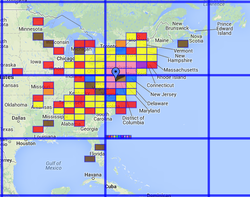 February 12, 2014 Editor: Ward Silver, NØAX | ||||||||
IN THIS ISSUE
NEW HF OPERATORS - THINGS TO DO If you like CW DX, the ARRL's International DX CW Contest keeps the DX aiming in your direction. With propagation so good lately, this might be a good weekend to spend on the radio. I never fail to recommend the North American QSO Party events and there's a good one for new RTTY operators next weekend. BULLETINS The ARRL Field Day rules and information packet is now available online. (Thanks, Dan N1ND) BUSTED QSOS No errors to report in the previous issue. CONTEST SUMMARY Complete information for all contests follows the Conversation section February 15-16
February 22-23
There have been some changes in the ARRL Contest Branch following the January 23rd resignation of Mike DeChristopher, N1TA, as ARRL Contest Manager. Former Contest Branch Manager, Sean Kutzko, KX9X, catches us up on the situation. "Since Mike's resignation, a team of ARRL staffers, including former Contest Managers Dan Henderson, N1ND and myself, have come together to address the needs of the Contest Branch until a replacement is found. Dave Patton, NN1N, is managing this team.
"Our efforts are directed as follows: "With the help of several ARRL staffers in the Awards Branch, we have sent out over 5,000 awards certificates in the last two weeks, including the 2012 CW and Phone Sweepstakes, the 2012 September VHF Contest, the 2012 August UHF Contest, the 2013 RTTY Roundup. 1,100 certificates for the 2012 10 Meter Contest were just sent to the ARRL mail room and should go out by the middle of the week. In addition, plaques for the 2012 CW Sweepstakes and 2013 RTTY Roundup were shipped. 2012 Phone Sweepstakes plaques were ordered last week and will be shipped within three weeks. We will continue to aggressively work on the backlog of overdue awards and hope to be caught up soon. You are welcome to monitor our awards progress at www.arrl.org/plaques-and-certificates which is updated regularly. "We do not foresee any delays in publication of contest results online or in QST. In addition, several results tables, log checking reports and databases have been uploaded to www.arrl.org/contest-results-articles in the last two weeks. "Finally, we are working together to take care of customer service inquiries to the Contest Branch and reply as rapidly as possible. We are disappointed with the delays in communications and awards fulfillment that contesters have experienced. The past few months have not been up to ARRL standards; we apologize for this and are working hard to correct it. "If you have any specific questions or inquiries of the ARRL Contest Branch, feel free to contact either Dave Patton, NN1N at nn1n@arrl.org or Sean Kutzko, KX9X at kx9x@arrl.org at any time. We thank you for your continued patience while we address these issues." (ARRL Media and Public Relations Manager, Sean Kutzko, KX9X) Updated rules for the 2014 CQ WPX Contests have been posted, including a new category - Multioperator, Single-Transmitter, Low Power. The rules have also been reformatted in a similar fashion to what was done for the CQ World Wide Contest rules last fall. The intent is to clarifying long-standing positions for the contest. (Thanks, CQ WPX Contest Director, Terry N4TZ) The WRTC-2014 committee has announced three of the four sponsored teams for this coming July's competition:
The fourth and final Team Sponsorship will be made available through an auction to be conducted March 8, 2014. Anyone interested in participating in the auction should contact WRTC Chairman, Doug Grant, K1DG, as quickly as possible to register.
DX Engineering is now the exclusive source for KD9SV Products Low Band receive transformers, preamplifiers, antenna switching units and other products. KD9SV Products for Low Band receiving antenna systems are well-known and have been used by DXers and contesters for over 25 years. JVC Kenwood has purchased the E.F. Johnson Company. EFJ has been manufacturing radios for a long time and you'll see the hamfest vintage equipment tables loaded with Johnson Rangers and Vikings and Thunderbolts while their Matchbox antenna tuners are still doing the job in antenna systems across the land. Lately, EFJ has been better known for its P25 VHF/UHF equipment used in public safety communication systems.
Bill K3WA found this interesting QSOMap web site in development that will take ADIF or LoTW logs and create a world map with pins. You apply various filters such as band, mode, and so forth. Bill used it to map out his QRP DXCC contacts, for example. To celebrate 35 years of the founding of the Cayman Amateur Radio Society, its members have been authorized by the ICTA to use ZF35 prefixes through January 19, 2015. Make sure your CTY files are updated to handle the new prefixes! Tom K1KI discovered this article about scanning your brain on overload. Does this count as a decoder? If you have an old URL for the AMSAT website, you may find incomplete website and broken links. Following a hacking incident some time ago, the new site (www.amsat.org) was rebuilt and is operating properly. Refresh your bookmarks, if necessary. (Thanks, AMSAT VP of Operations, Drew KO4MA) Web Site of the Week - Ian G3NRW has updated the Band Utilization Charts for 30 meters, 60 meter UK allocations, and 160 meters. He asks to be notified by email if you know of anything that needs updating. He reminds us that these charts are not band plans, they are just indicators of actual band utilization. WORD TO THE WISE Jump ball - what happens when a North American Sprint QSO ends and several stations call to make the QSO and acquire the frequency. See the Operating Tip section for more about Sprint-style operation.
Terry W8ZN and Andy K1RA activated the Grid Pirates Contest Group call sign K8GP as a rover in the ARRL January VHF Contest and put together a musical video exploration of the highways and byways on their route. The full story is online, too. The rarely seen Beamed Phantasatron tube would certainly have made a nice final amplifier in the shack. Very final. (Thanks, Bob N6TV) Speaking of tubes, the Los Boludos website shows a whole family of uses for vacuum tubes! (Thanks, George K5TR) The extended writeup by Jeff K1TEO for the ARRL September VHF Contest has been published on the Contest Results Articles page. Part of the catching up process noted above, Log Checking Reports are now available for the 2013 ARRL June VHF and August UHF contests. While some ARRL RTTY Roundup log submitters received "late" notices from the email log-handling robot software on the final day before the deadline, all RTTY Roundup logs were accepted through Friday, February 7th. If you have any question about whether your log was accepted, check the ARRL's Logs Received page to be sure your log is listed there.
OPERATING TIP The North American Sprint contests are different than the usual contests and take a little getting used to for new sprinters. Here are a few tips:
Double-up on tower safety in the winter! Faults and failures don't wait for good weather and sometimes you just have to climb in the cold. If you do, Kelly Hill from RCR Wireless wrote up this helpful article about cold weather tower work. (Thanks, Eric W3DQ) How much air flow is enough through an amplifier tube or tube chimney? Roger K8RI suggests just start by measuring pressure drop across the tube using the simple manometer design in the ARRL Handbook. If the pressure drop is right, then by definition you have the right amount of air flow. You might not want to run a blower at full throttle all the time since they can be pretty noisy. Roger's solution is to use a temperature sensor in the exhaust air to control a high/low setting for the blower. A switch to put the blower on HIGH will be helpful during digital operation.
John G4ATA's nice web page on low-band 4-squares and other arrays has been updated after a period of inactivity. He has plans for a new 4-square on 40 meters for a portable operation in the CQ WPX Phone contest and will be testing it during the preceding Russian DX Contest. During my recent visit to the Arecibo Observatory, I noticed some new antennas at the bottom of the big dish shown in the photo at right. I dropped an email to Dr. Jim Breakall, better known as WA3FET, who explained his latest project. "There are 3 crossed-dipoles for 5.1 MHz and another 3 for 8.175 MHz forming an array that will beam energy up to a net mesh reflector that will hang from the 3 big towers. This "cassegrain" reflector will then reflect energy back down to the 1000-foot dish and beam 100s of megawatts up to the ionosphere to modify it. Each of the dipoles is fed from a 100 kW transmitter giving a total transmitted power of 600 kW. With the gain of the dish even at HF, that produces 100s of megawatts." I wonder if he could split the difference and get on 40 meters during Sweepstakes! Three projects caught my eye in recent emails from the Instructables website. The first is a Foot-Operated Hold-Down Tool that I can easily see being used in the antenna shop. Anyone who has hauled a big piece of equipment in the trunk will get some ideas from the article on Configurable Cargo Blocks. And if you really want to protect your bike-mounted radio, our favorite Pelican case makes an appearance in this handlebar-mounted basket for radio geeks! (Thanks, Frank KR1ZAN) Any teachers of analog circuit design reading this issue? I know you're out there...I have been such an instructor and enjoyed this flyer from Analog Devices features their tools for helping students effectively learn analog design. Whether you use the Analog Devices gear or not, there is plenty to consider about the types of tools to use. For HFTA users who haven't dealt with MicroDEM in a while, HFTA's author, Dean N6BV observes that USGS changes the data access websites for terrain data fairly frequently. This causes MicroDEM to fail or get the wrong stuff. Dean suggests "that you do a complete re-install of MicroDEM -- I suggest that you first uninstall the version you have on your computer now. Then go to www.usna.edu/Users/oceano/pguth/website/microdem/microdemdown.htm and download the "Complete MICRODEM Install". Run it, followed by downloading the latest executable microdem.exe. This should properly install all the various files that MicroDEM needs to function properly." John VA7JW has written an impressive how-to guide for HFTA and MicroDEM beginners that is worth reviewing. There is also a Potomac Valley Radio Club webinar on the process that has been archived by the World Wide Radio Operators Foundation. USGS has confirmed that they have discontinued the GeoTIFF data format that contained the needed .GIF file, as a cost-cutting measure. For the moment, at least, you can still get un-updated GeoTIFF. The default format is ArcGrid, just as it used to be direct from USGS, but you can modify your data request to change to GeoTIFF. (Thanks, Pete N4ZR) Technical Web Site of the Week - This Microwaves & RF magazine article on using origami paper-folding techniques to compress antennas is a great example of innovative thinking. The Boundary Problem, Part One As technology continues to drive widespread change throughout ham radio, radiosport is by no means immune. In fact, radiosport is on the "bleeding edge" of those changes in many instances. While adopting and inventing new technology is an important aspect of radiosport -- and of ham radio, generally -- it also presents continual challenges to our assumptions about how competitions are defined and organized. A lot has changed since the early days of contesting when the edgy technology discussions were about 2 meter AM alerting channels and learning to hold the logging pencil while you sent code with a Hallicrafters HA-1 electronic keyer and single-lever paddle. Yet by and large, our categories are still more or less as they were a half-century ago with the sometimes-grudging addition of "assisted" classifications that create more confusion than clarity.
Onward into the 21st century -- do the new technologies of ubiquitous data and computer-controlled multi-radio shacks require a completely new game? Certainly, novel types of contests can and will be created but it's still necessary to agree on the basic definitions and relationships. That's usually where the trouble, er, fun begins. Addressing these questions is the topic of this multi-part series with the intent of encouraging discussions of where and how we go forward from here. The basic architecture of radiosport contesting is defined by the following things; boundaries, the information that crosses them, the equipment within those boundaries, and the operation of that equipment. Boundaries are the standard lines-on-a-map that have been around a long time. For instance, the CQ World Wide Contest rules require all of the equipment to be within a 500-meter diameter circle and the ARRL's Affiliated Club Competition rules specify a 175-mile diameter circle for Unlimited and Medium clubs. Circles seem popular! We understand physical boundaries but what about other types? Abstract sorts of boundaries might also apply to off-site computing services or data-sharing in cyberspace somehow. Future contests will have to address these and similar issues. Information means any data or signals pertaining to other stations participating in the contest. This is a more inclusive way of referring to all of the radio signals, spotting information, Internet messages, telephone calls, etc that relate to what a station is doing, on or off the air. Contest rules can limit what information can be produced (power limits, bands of operation), what information can be received (limits on spots and non-radio communications like telephone calls), and specify what information must be exchanged and recorded. Contest rules can restrict the information allowed to cross boundaries, as well, and in either direction -- either incoming or outgoing. Equipment is any device or program used to generate, process, transmit, or receive information. Another broad group, this includes everything from the antenna to the software used to log contacts. Some contests place no restrictions on equipment -- use whatever you have. Other contests restrict the use of certain types of equipment, such as automated decoders or lockout devices. Stations consist of equipment within a boundary defined by the contest sponsor. Operation is the exercise of a control function on any of the equipment or use of information to affect a submitted log or score. In other words, how the equipment and information are used in order to produce the contest entry. Operators are the entities (human or otherwise) that engage in operation. Well, duh! Why that fine distinction? Some contests might restrict the use of automated devices that perform control functions, such as spotting other stations. Or perhaps the rules specify whether the operator must be physically located within the station boundary. That's plenty to get us started. It seems awfully basic but so are bricks and that's what buildings are made of. Creating a sturdy building requires good bricks and a plan for using them. And that's where we will pick up the thread next time! 12 February through 25 February An expanded, downloadable version of QST's Contest Corral in PDF format is available. Check the sponsor's Web site for information on operating time restrictions and other instructions. HF CONTESTS ARRL International CW DX Contest--CW, from Feb 15, 0000Z to Feb 16, 2359Z. Bands (MHz): 1.8-28. Exchange: RST, state/province or power. Logs due: Mar 18. Rules North American QSO Party RTTY--Digital, from Feb 22, 1800Z to Feb 23, 0600Z. Bands (MHz): 3.5-28. Exchange: Name and S/P/C. Logs due: 7 days. Rules NAQCC Monthly QRP Sprint--CW, from Feb 12, 0130Z to Feb 12, 0330Z. Bands (MHz): 3.5-14. Monthly on 2nd Tuesday or 3rd Wednesday local time (alternating). Exchange: RST, S/P/C, and NAQCC mbr nr or power. Logs due: 4 days. Rules CWops Monthly Mini-CWT Tests--CW, from Feb 12, 1300Z - See website. Multiple time periods. Bands (MHz): 1.8-28. Twice monthly on 2nd and 4th Wed, 28 to 38 kHz above band edge. Exchange: Name and member number or S/P/C. Logs due: 2 days. Rules PODXS 070 Club Valentine Sprint--Digital, from Feb 14, 8 PM to Feb 15, 2 AM. Bands (MHz): 1.8-7. 1.807, 3.580, 7.070/7.035 EU/7.028 JA (MHz). Exchange: Name, OM or YL, S/P/C. Logs due: Feb 28. Rules Russian WW PSK Contest--Digital, from Feb 14, 2100Z to Feb 15, 2100Z. Bands (MHz): 1.8-28. Exchange: RST and oblast code or serial. Logs due: 15 days. Rules Feld-Hell Bingo Sprint--Digital, from Feb 15, 2000Z to Feb 15, 2200Z. Bands (MHz): 1.8-28, 50, Monthly on 3rd Saturday. Exchange: RST, S/P/C, Feld-Hell member nr. Logs due: 7 days. Rules Run For the Bacon--CW, from Feb 17, 0200Z to Feb 17, 0400Z. Bands (MHz): 1.8-28. Monthly on 3rd Sunday night (local). Exchange: RST, S/P/C, Flying Pig nr or power. Rules Semi-Automatic Key Evening--CW, from Feb 19, 1900Z to Feb 19, 2030Z. Bands (MHz): 3.5. Exchange: RST, serial, first year of bug use. Logs due: Mar 15. Rules CQ WW 160 Meter SSB--Phone, from Feb 21, 2200Z to Feb 23, 2200Z. Bands (MHz): 1.8. Exchange: RST and state/province or CQ zone. Logs due: 5 days. Rules REF Contest--Phone, from Feb 22, 0600Z to Feb 23, 1800Z. Bands (MHz): 3.5-28. Exchange: RS and French dept or serial. Logs due: 15 days. Rules SARL Youth Day Sprint--Phone, from Feb 22, 0800Z to Feb 22, 1000Z. Bands (MHz): 7. Exchange: RS and age. Logs due: 7 days. Rules UBA Contest--CW, from Feb 22, 1300Z to Feb 23, 1300Z. Bands (MHz): 3.5-28. Exchange: RS, serial, and ON province. Logs due: 2 weeks. Rules North Carolina QSO Party--Phone,CW,Digital, from Feb 23, 1500Z to Feb 24, 0059Z. Bands (MHz): 3.5-28, 50, 144, CW 3.54, 7.04, 7.14, 14.04, 21.04, 28.04, 50.04, 144.04; Phone 3.86, 7.26, 14.26, 21.36, 28.36, 50.16, 52.04(FM), 144.26, 146.58(FM) MHz. Exchange: NC county or S/P/C, RS(T) optional. Logs due: 15 days. Rules CQC Winter QSO Party--Phone,CW, from Feb 24, 0100Z to Feb 24, 0259Z. Bands (MHz): 3.5-14. 3.560, 7.040, 14.060 MHz. Exchange: RS(T), S/P/C, name, CQC nr or power. Logs due: 30 days. Rules VHF+ CONTESTS Feld-Hell Bingo Sprint--Digital, from Feb 15, 2000Z to Feb 15, 2200Z. Bands (MHz): 1.8-28, 50, Monthly on 3rd Saturday. Exchange: RST, S/P/C, Feld-Hell member nr. Logs due: 7 days. Rules Maine 2m FM Simplex Challenge--Phone, from Feb 16, 1700Z to Feb 16, 2100Z. Bands (MHz): 144, FM simplex frequencies only. Exchange: Call sign, power, city name. Logs due: 15 days. Rules North Carolina QSO Party--Phone,CW,Digital, from Feb 23, 1500Z to Feb 24, 0059Z. Bands (MHz): 3.5-28, 50, 144, CW 3.54, 7.04, 7.14, 14.04, 21.04, 28.04, 50.04, 144.04; Phone 3.86, 7.26, 14.26, 21.36, 28.36, 50.16, 52.04(FM), 144.26, 146.58(FM) MHz. Exchange: NC county or S/P/C, RS(T) optional. Logs due: 15 days. Rules LOG DUE DATES 12 February through 25 February
ARRL Information Click here to advertise in this newsletter, space subject to availability. Your One-Stop Resource for Amateur Radio News and Information ARRL membership includes QST, Amateur Radio's most popular and informative journal, delivered to your mailbox each month. Subscribe to NCJ - the National Contest Journal. Published bimonthly, features articles by top contesters, letters, hints, statistics, scores, NA Sprint and QSO Parties. Subscribe to QEX - A Forum for Communications Experimenters. Published bimonthly, features technical articles, construction projects, columns and other items of interest to radio amateurs and communications professionals. Free of charge to ARRL members: Subscribe to The ARRL Letter (weekly digest of news and information), the ARES E-Letter (monthly public service and emergency communications news), Division and Section news -- and much more! ARRL offers a wide array of products to enhance your enjoyment of Amateur Radio. Visit the site often for new publications, specials and sales. Donate to the fund of your choice -- support programs not funded by member dues! Reprint permission can be obtained by sending email to permission@arrl.org with a description of the material and the reprint publication. ACKNOWLEDGEMENTS ARRL Contest Update wishes to acknowledge information from WA7BNM's Contest Calendar and SM3CER's Contest Calendar. | ||||||||
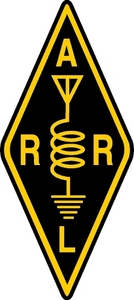
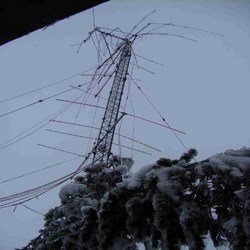
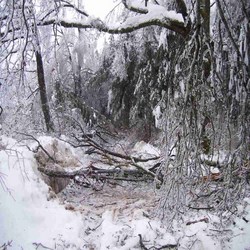
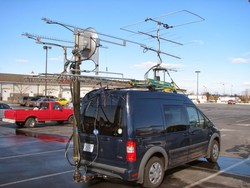
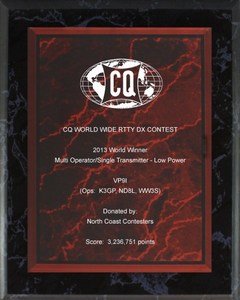
.jpg)
